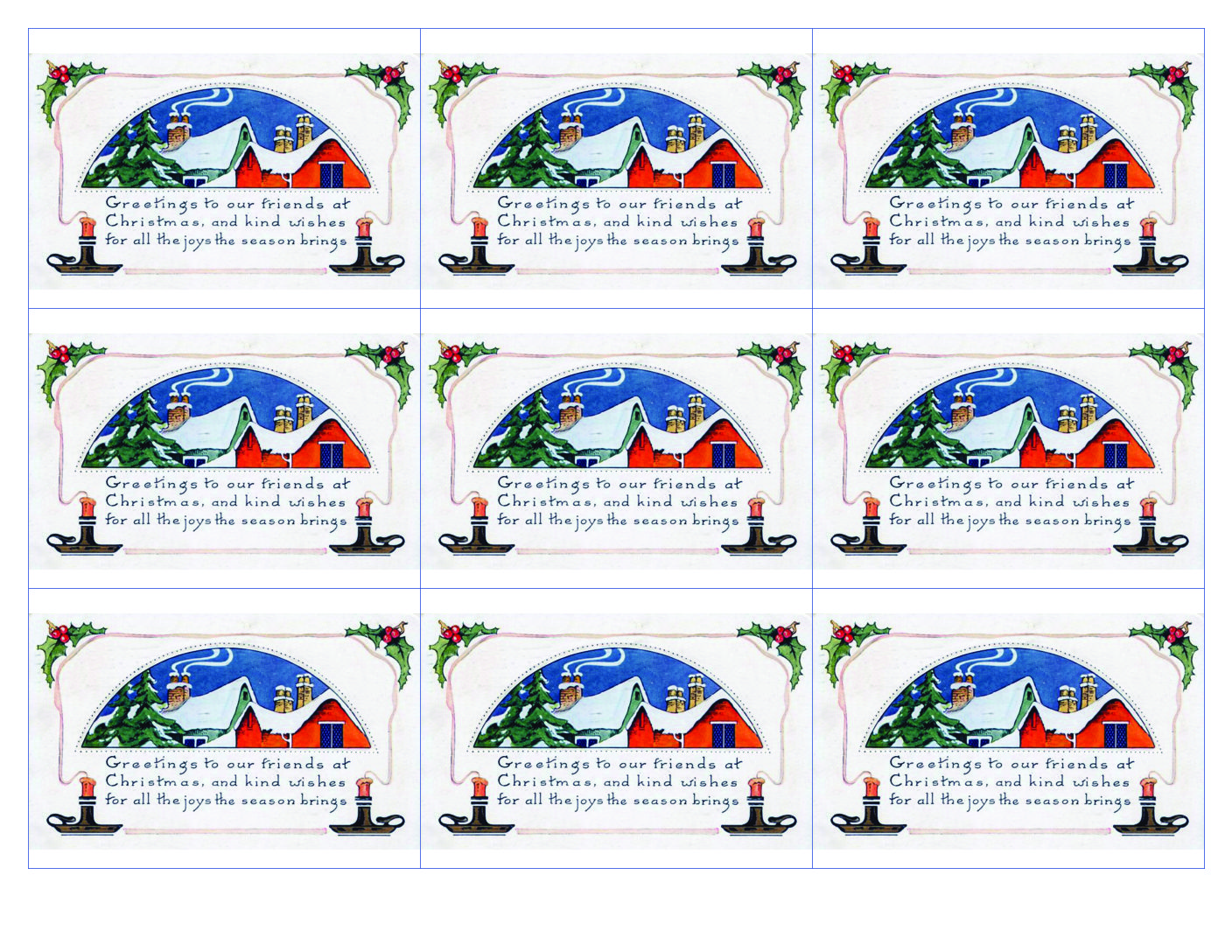Happy Holidays!
from [list each family member name]
[complete mail address]
[family email address]
[additional info — in this case the URL about this card, to this post]
©2018, Public Domain image,
https://freevintageillustrations.com/free-vintage-christmas-
cards-public-domain/free-vintage-christmas-cards-with-
snowtops-and-candles/
[top—card front; above—info on card back]
Above is the image of the solution to my perceived problem with greeting cards, with the explanation below.
The Problem
Need: I see the continuation of people valuing tactile objects, even with the convenience, and minimalism, of digital versions of things (e.g., books, ecards).
Weakness: I see people receiving holiday, greeting, birthday, and / or thank you cards; getting brief enjoyment, and possible contact info update(s), from the cards and then the cards go into the recycling / trash or in storage for eventual recycling / trash (with the occasional exception of use for art / crafts). The cards have such a brief benefit then become more clutter / trash in the world.
Proposed Solution
I see this a non-working system and contemplated solutions — and my suggested solution is ATC greeting cards.
The above image and text shows the template for our 2018 holiday card
What are ATCs?
ATC stands for Artist Trading Card.
They were created as a way for artists, or anyone, to trade small pieces of art. The cards are intended to be 2-1/2″ x 3-1/2″ in size (same size as baseball cards, playing cards, or any trading cards). If not too thick, they should fit in any standard plastic trading card sleeve notebook page. ATCs usually have details about the card on the back, such as artist, date, media; and the front can be either a flat image or physical media, from collage to sewn or glued embellishment.
That said, what if you take the idea an ATC and adapt it to greeting cards?
* You have the beauty of the front of the card (art);
* You have (if included by the sender) all the info on the back of the card:
— greeting / message / intent of card;
— full names of the sender(s), possibly with ages for the kids;
— contact info, which may include mail address, email address, phone number(s);
— date (with or without copyright) [OPT + G for Mac; CTRL + G for PC]
— description / info regarding the art on the front of the card
* These can be adapted for busy people (using prepared images and / or text); or
* These can be DIY cards at whatever level of time and creativity people want to put into them.
This will work if a large number of people shift to this format, then all cards can be stored, by year, in 3-ring notebooks in trading card pages, and this can serve as an art journal, reference for contact info for friends and family, and memorabilia — all in the manageable space of 3-ring notebooks that can be kept on a bookshelf with memorabilia books or scrapbooks.
Please share this post using the links below, and consider if this would be something to incorporate in your habits. Leave a comment below (or with the social media post) as to why you would, or would not, add this to your greeting card habit. If not, is there something that would need to be in place for you to participate, such as the convenience of preprinted cards, or only if others are adopting this format? Thanks for your feedback!
Resources
About ATCs
Card Templates
Images
